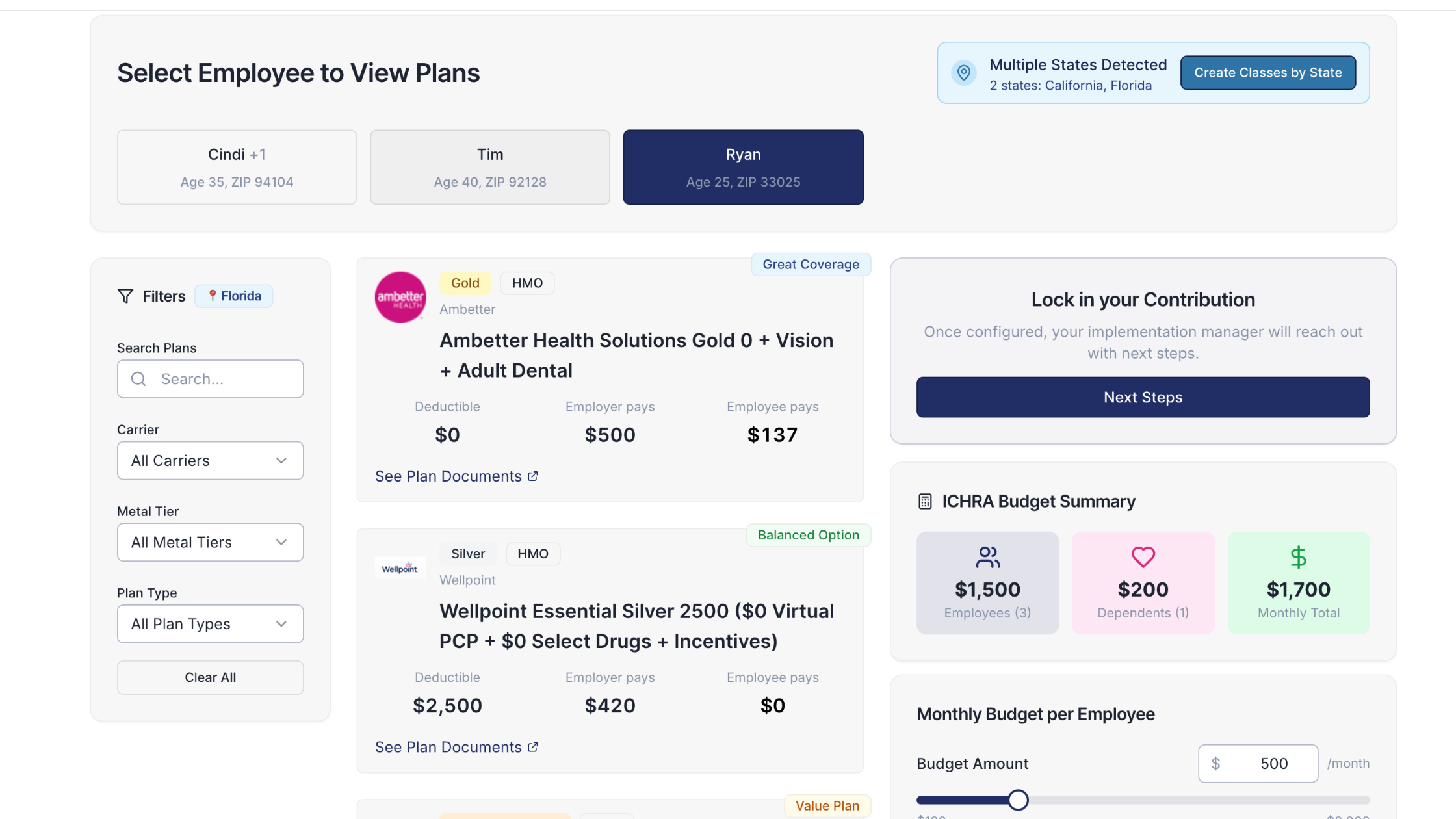The Premium Tax Credit and ICHRA: how does it affect you?

In preparing your ICHRA for your employees, you’ll need to know the parameters of PTC and how it plays with ICHRA. By law, PTC is not available to employees who use ICHRA in purchasing their health care coverage.
But (there’s always a but) if the ICHRA their employer offers is deemed unaffordable, employees can opt out of ICHRA and take the PTC.
We’ll go more into detail into what that looks like for your employees and your ICHRA.
SIDE NOTE: Other health care tax credits do exist, including the Small Business Tax credit for SMB owners. Our focus is on the Premium Tax Credit and ICHRA. If you have questions about the other tax credits and how it can affect your group plan offerings, get in touch with us.
What is the Premium Tax Credit?
Established by the Affordable Care Act, the PTC allows eligible individuals and families to offset their premium payments on either the federal or state Marketplace plans — and only on those Marketplace plans. The PTC can be used on bronze, silver, gold and platinum plans, but not catastrophic coverage.
To qualify, you must meet income guidelines, file a joint return if married, not be claimed by another person, and be a legal resident of the United States.
The ACA mandated that households who make between 100% to 400% of the Federal Poverty Level (the 2022 level for a family of three is $23,030) qualify for the PTC. The American Rescue Plan Act (ARPA) expanded the PTC for more qualifying households. Those with household income over 400% of the federal poverty line have their upper premium contribution capped at 8.5% of household income.
Advanced Payment of the PTC
One perk of the PTC is households can claim the PTC before filing their tax returns. Based on the information provided in the Marketplace application, individuals will receive the PTC that the government would pay the insurer, who then would credit your premiums. Individuals can claim none, some or all of the tax credit for their premium payments.
However, employees will need to reconcile the PTC on their federal tax return. If you underestimated your expected income and took too much of the PTC, you will have to repay some or all of it back. On the other hand, if you used too little of the PTC, the government will refund you the difference.
Because of the pandemic, the ARPA suspended repayment of the PTC for 2020 only. Repayments have started up again.
Defining affordability is key
Like we mentioned earlier, an employee cannot claim the PTC if they also take an ICHRA.
For 2022, ICHRA is considered affordable if the remaining amount an employee must pay for a self-only lowest-cost silver plan on the Marketplace does not exceed 9.61%.
If your companies’ ICHRA is deemed unaffordable, then the employee can opt out of ICHRA and claim the PTC.
Here’s a way of determining if your ICHRA is deemed affordable from Healthcare.gov:
- Affordability is based on the lowest-priced silver plan in your state’s marketplace. That may not be the plan employees choose but it’s the one that determines premium affordability. For example, the plan’s premium in our example is $300 a month.
- Let’s say you offer a $600 a month ICHRA for an employee making $50,000 a year. To figure out affordability based on income, you would divide 50,000 by 12 months, then multiply by 9.61% (x .0961). That equals $400.41.
- You subtract the premium from ICHRA, which leaves $300.
- Because the income difference is more than the premium difference, this ICHRA is deemed affordable and thus, the employee couldn’t opt-out and take the PTC.
Yes, we know: There’s a lot of math here and it can be confusing. But the key component is ensuring you have an affordable ICHRA and if not, knowing what options your employees have in pursuing affordable health care.
Reach out for a quote. We’ll do the math for you and help you build a health plan that saves you money, while meeting these affordability requirements.
You got questions, we got answers!
We're here to help you make informed decisions on health insurance for you and your family. Check out our FAQs or contact us if you have any additional questions.
Explore more related content
What is Venteur
Explore the best human-first Health Insurance platform
Simple, personalized health benefits
Sign up in minutes, define your contribution, and let your employees choose the health plan that works right for them
Integrations to make everything run smoothly
We'll connect with your payroll and finance systems to make deductions and premium payments seamless
Easy onboarding and off-boarding
In just a few clicks, add your roster and make updates on the fly. We'll handle it from there.
Venteur Certified Brokers to help your employees pick the right plan
Our trusted brokers ensure the best outcomes for employees and employers by unlocking health savings and providing unrivaled plan options.
AI-powered plan recommendations to give you confidence while you shop
Backed by 30 years of healthcare data, Venteur’s AI helps employees compare and choose the best plan for their unique situation.
Compliance and reporting because no-duh!
Venteur manages plan administration, reporting, and compliance so you can focus on growing your business.


